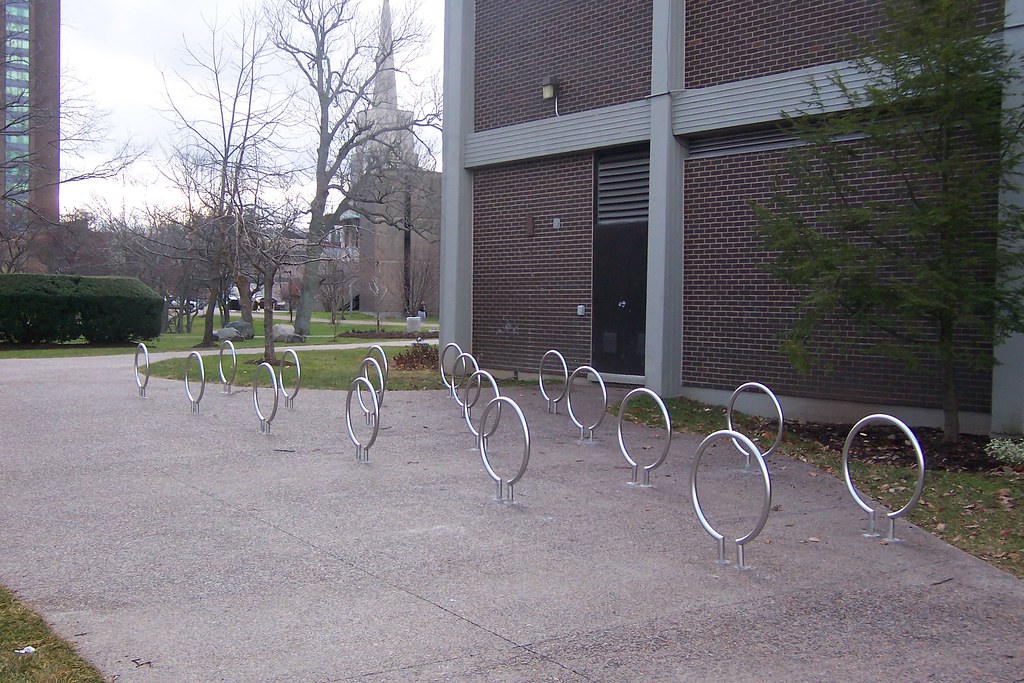HALIFAX – Toasters, grids, hangers and racks. No, I’m not creating a list of appliances I’m hoping to get for Christmas. All of these words are used to define different bike rack options available to developers of public and private spaces.
It seems more and more evident that while designing spaces these days—be they public, residential, commercial or industrial — issues surrounding parking are always an afterthought to planners and architects. Instead of hiding vast parking lots underground, we are left with oceans of concrete behind malls and grocery stores, or seas of asphalt that surround apartment building’s like 21st century moats. What’s worse is that parking options for cyclists are quickly thrown into building plans with no regard for the needs of the population they are supporting. As a result, we are left with pieces of infrastructure that are inefficient, frustrating and sometimes a downright hazard to our rides! So what makes a good parking spot for bicycles?
Andrew Hayes, infrastructure director for the Halifax Cycling Coalition indicates that there are three main criteria that make excellent bike parking spots: contact, shelter and location. “As far as contact is concerned,” Hayes explains, “having two points of contact is key. Not only does this provide stability to your bike, but it gives you more places to lock your frame to the rack, which increases security.” Shelter is another consideration expanded on by Hayes: “You are more likely to need a tune up more often if your bike is exposed to the elements.” Adding a roof over a bike rack provides a degree of shelter to your ride that reduces wear, tear and rusting. When it comes to location, Hayes indicates “the worst places for bikes to be parked is out of sight from their owners or pedestrian traffic.” Yet finding a bike rack tucked away in an alley beside a business is not an uncommon observation when cruising down the streets of Halifax.
Although bike parking isn’t all it’s cracked up to be, it’s getting better. New policies are in place stating that developers have to provide a certain amount of on-site bike parking, dependent on the square footage of new buildings. Business owners have also taken it upon themselves to provide bike parking to their velocipedal clientele. But how do we encourage building owners to update and upgrade the bike parking they have already?
Join Spacing Atlantic next week as the Halifax Cycling Coalition tries to answer this question.
photo by Jake Schabas


One comment
The City of Toronto put together a helpful guide to installing bike parking. It has clear examples (with pictures!) of good and bad bike rack installations.
http://www.toronto.ca/planning/pdf/bicycle_parking_guidelines_final_may08.pdf
I wish people would read that guide or something similar before they put in their bike racks. I get the sense that a lot of racks are installed by people who never ride a bicycle. Why else would they install them where they do?